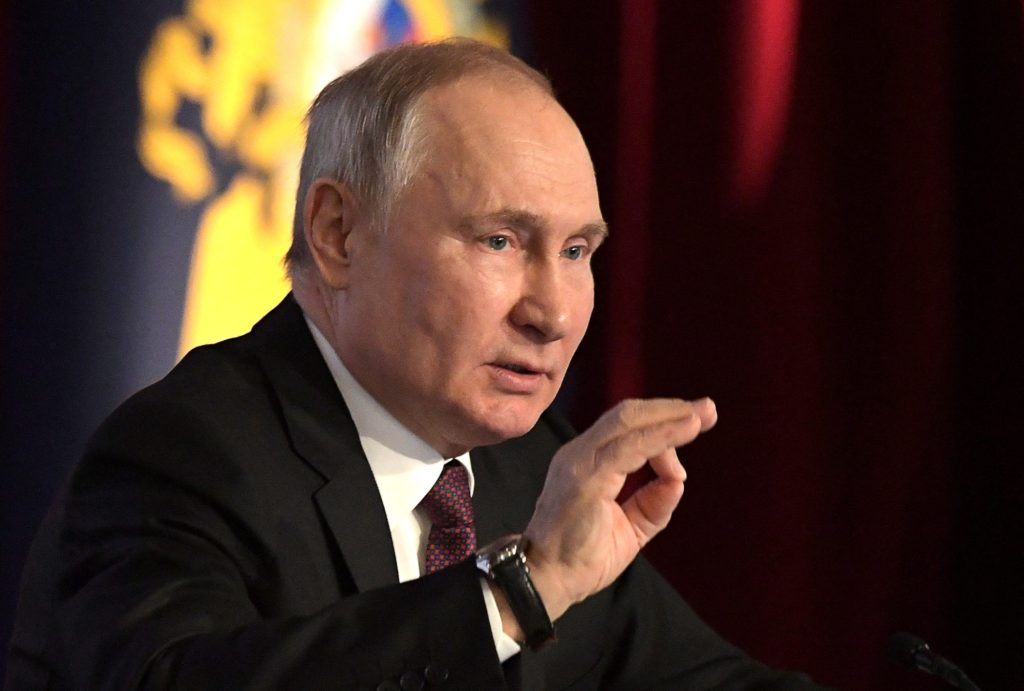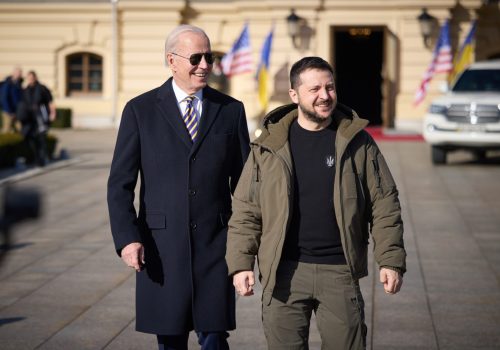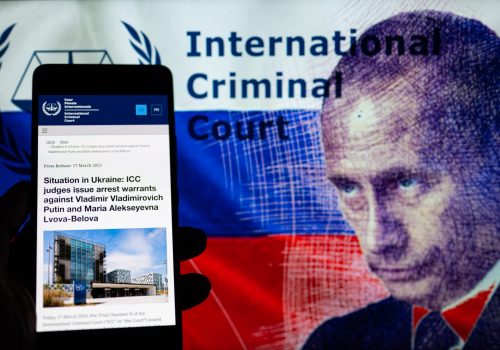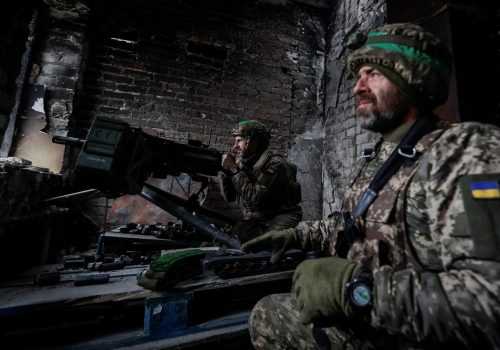Over the past year, Vladimir Putin has compared himself to empire-building eighteenth century Russian Czar Peter the Great, and has attempted to annex entire regions of Ukraine while declaring that he is “returning historically Russian lands.” A recently leaked document purportedly detailing Russian plans to absorb neighboring Belarus now provides further insight into the imperial ambitions that are also driving the invasion of Ukraine.
Allegedly produced by Putin’s Presidential Administration with input from the Russian intelligence services and armed forces, the 17-page internal strategy paper was made public in early 2023 by an international consortium of journalists. It serves as a comprehensive guide to the unofficial annexation of Belarus via a combination of economic, military, political, and social measures, with the objective of full absorption into a so-called “Union State” with Russia by 2030.
The Russian takeover of Belarus as outlined in the document appears to closely mirror Moscow’s plans for Ukraine, albeit by less direct means. “Russia’s goals with regard to Belarus are the same as with Ukraine. Only in Belarus, Russia relies on coercion rather than war. Its end goal is still wholesale incorporation,” commented Michael Carpenter, the US Ambassador to the Organization for Security and Cooperation in Europe, following publication of the leaked document.
The strategy document for Belarus envisions the comprehensive russification of Belarusian society along with a sharp reduction in the influence of nationalist and pro-Western forces, which are viewed by Russia as virtually indistinguishable in relation to both Belarus and Ukraine. The Belarusian political, financial, business, and education systems would be fully integrated into Russia, with a network of pro-Russian media, NGOs, and cultural institutions established to aid this integration process.
In the military sphere, the Belarusian army would become de facto part of the Russian military, with Belarus increasing the number of Russian bases in the country and allowing Moscow to dramatically expand its military presence. Putin’s recently announced intention to base Russian tactical nuclear weapons in Belarus are an indication that this plan is already advancing.
The publication date of this alleged Russian blueprint for the takeover of Belarus is particularly interesting. It was reportedly produced in summer 2021 at a time when Putin’s mind seems to have been turning toward grand visions of imperial conquest. Increasingly isolated due to the Covid pandemic and surrounded by a shrinking circle of imperial hardliners and sycophants, Putin appears to have made the fateful decision in mid 2021 to extinguish Belarusian and Ukrainian independence once and for all.
Efforts to unofficially annex Belarus were well underway by this point. Belarusian dictator Alyaksandr Lukashenka was already heavily reliant on Russia following a Kremlin intervention to prop up his tottering regime in the wake of nationwide protests over the country’s rigged August 2020 presidential election.
As Kremlin officials were busy drawing up plans to incorporate Belarus, Putin himself was penning a 6000-word treatise outlining his denial of Ukraine’s right to statehood and his insistence that Ukrainians were really Russians (“one people”). Putin’s July 2021 essay was widely seen as a declaration of war against Ukrainian independence. His lengthy article laid the ideological foundations for Russia’s full-scale invasion of Ukraine, which began seven months later.
Putin’s plans for a subjugated Ukraine share many common features with his vision for the takeover of Belarus. Following the anticipated military conquest of Ukraine, Russia intended to install a puppet ruler in Kyiv who would replace Zelenskyy and play the same role as Lukashenka in Belarus. For both countries, Moscow’s ultimate goal is the same: Complete absorption into a new Russian Empire.
Stay updated
As the world watches the Russian invasion of Ukraine unfold, UkraineAlert delivers the best Atlantic Council expert insight and analysis on Ukraine twice a week directly to your inbox.
Putin’s dreams of a new Russian Empire have been evident since his first term in office but became more obvious following his formal return to the presidency in 2012. From this point onward, Putin began to openly embrace an imperialistic brand of nationalism that positioned him as the latest in a long line of Kremlin rulers celebrated as “gatherers of Russian lands.” In the contemporary context, this meant incorporating fellow East Slavic states Belarus and Ukraine into a new Russia-led union.
The idea of a union between Russia, Belarus, and Ukraine was not new and first gained prominence during the collapse of the USSR when promoted by Soviet dissident Alexander Solzhenitsyn. East Slavic unity had both ideological and practical appeal for Putin. It would secure his place in Russian history while also creating a solid basis for the Eurasian Economic Union (EEU), Putin’s alternative to the EU.
Initially, Putin hoped to absorb Ukraine without a fight. Indeed, in 2012 and 2013, the Kremlin adopted many of the same tactics later used in Belarus to strengthen Russia’s grip on the country. However, post-Soviet Ukraine had a far stronger sense of national identity than Belarus, with a majority of Ukrainians seeing themselves as Europeans and embracing the country’s fledgling democratic traditions. This was to prove a major obstacle for Putin’s imperial project.
As Ukraine prepared to sign a long-anticipated Association Agreement with the European Union in last 2013, Moscow unleashed a trade war and began pressuring Ukraine’s pro-Kremlin president Viktor Yanukovych to reject Brussels in favor of Moscow. When Yanukovych attempted to do so, mass protests erupted in Ukraine that escalated into a full-scale revolution in support of democracy and European integration. Within three months, Yanukovych found himself deserted by his allies and escaped to Russia.
Russia responded to the success of the Euromaidan Revolution by occupying Crimea and attempting to orchestrate uprisings throughout southern and eastern Ukraine. Targeted regions of Ukraine were rebranded by the Kremlin using the old Czarist-era imperial term of “Novorossiya” or “New Russia.” This strategy was only partially successful, with Kremlin-backed uprisings defeated in most major Ukrainian cities except for Donetsk and Luhansk in eastern Ukraine’s Donbas region, where Kremlin control was secured with the assistance of the invading Russian army.
Over the next eight years, Putin attempted to rebuild Russia’s political influence inside Ukraine while pressuring the country to accept a Kremlin-friendly interpretation of the February 2015 Minsk Accords, which had brought the worst of the fighting to an end in eastern Ukraine without establishing a durable peace. Moscow’s vision for the implementation of the Minsk Accords would have transformed Ukraine into a dysfunctional Russian satellite, but this outcome met with resistance from successive Ukrainian presidents.
By early 2021, Putin had come to the conclusion that his strategy was failing and appears to have recognized that Ukraine was slipping irreparably out of the Russian orbit. At this point, he and other Kremlin leaders began referring to Ukraine as an “anti-Russia” and portraying the country as an intolerable outpost of NATO and US interests on Russia’s borders. The available evidence suggests that by the time Putin published his notorious essay in summer 2021, he was already fully committed to crushing Ukrainian independence by military means.
Eurasia Center events

In a clear echo of the strategy adopted for Belarus, Russia’s FSB security service was tasked in 2021 with preparing plans for the military occupation and pacification of Ukraine. However, a combination of FSB corruption, wishful thinking, and misplaced stereotypes about modern Ukraine resulted in a series of disastrous miscalculations.
Collaborators within the Ukrainian government told FSB agents what they wanted to hear with no regard for the realities on the ground, while the Kremlin’s networks of Ukrainian informants, NGOs, and other “experts” assured their Russian colleagues that the invading Russian army would be welcomed. Meanwhile, FSB officers confidently predicted that Ukrainian President Volodymyr Zelenskyy would soon be captured or forced to flee, with organized Ukrainian resistance unlikely to last longer than a few days.
These intelligence failures persuaded Putin to embark on the biggest gamble of his presidency with a wholly inadequate force of less than 200,000 troops. This was regarded as sufficient to install a pro-Russian regime and place Ukraine on the same path as Belarus toward absorption into the Russian Federation.
Captured documents, prisoner accounts, and the actions of the Russian occupation forces in regions of Ukraine under Kremlin control now make it possible to produce a comprehensive picture of Russia’s plans for the subjugation of the country. These plans share many features with Moscow’s approach to the creeping annexation of Belarus, while employing infinitely more direct and brutal methods.
The events of the past year make clear that Russia’s stated invasion objective of “de-Nazification” actually means the execution, imprisonment, deportation, or otherwise silencing of anyone deemed to be a Ukrainian patriot. Those targeted since the invasion began in February 2022 have included elected officials, civil society activists, educators, journalists, army veterans, and cultural figures.
The systematic suppression of Ukrainian national identity has been undertaken alongside intensive russification efforts, including the introduction of a Kremlin-approved Russian school curriculum and the promotion of an imperial identity. In parallel, local businesses have been forced to integrate into the Russian economy, with the wider population in occupied Ukraine obliged to accept Russian citizenship.
The obvious similarities between the Kremlin’s long-term Belarus strategy and the tactics being employed in occupied Ukraine undermine Russian efforts to portray the ongoing invasion as a defensive measure driven by valid security concerns. Instead, a picture emerges of Vladimir Putin’s overriding ambition to absorb both countries and secure his place in history as a “gatherer of Russian lands.”
While his approach to each country may currently differ in the details, Putin clearly aims to bring both Ukrainian and Belarusian independence to an end, and has placed these imperial ambitions at the heart of his entire reign. This makes a mockery of calls for a compromise with the Kremlin. Instead, Western leaders must recognize that peace in Europe will remain elusive until the Russian dictator is forced to abandon his dreams of empire.
Taras Kuzio is professor of political science at the National University of Kyiv Mohyla Academy and author of the newly published “Fascism and Genocide. Russia’s War Against Ukrainians.”
Further reading
The views expressed in UkraineAlert are solely those of the authors and do not necessarily reflect the views of the Atlantic Council, its staff, or its supporters.

The Eurasia Center’s mission is to enhance transatlantic cooperation in promoting stability, democratic values and prosperity in Eurasia, from Eastern Europe and Turkey in the West to the Caucasus, Russia and Central Asia in the East.
Follow us on social media
and support our work
Image: Russian President Vladimir Putin speaks during a meeting of the Russian interior ministry board in Moscow, Russia. March 20, 2023. (Sputnik/Alexei Nikolskyi/Kremlin via REUTERS)




